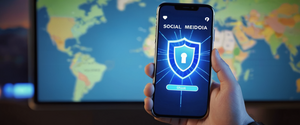
Torrenting without a Virtual Private Network (VPN) exposes users to a complex ecosystem of risks that span legal, financial, technical, and privacy dimensions. The fundamental problem is that torrenting without a VPN leaves your Internet Protocol address publicly visible to potentially hostile actors, including copyright holders, copyright enforcement agencies, internet service providers, malware distributors, and malicious peers in torrent swarms. This exposure can lead to severe consequences ranging from DMCA notices and service termination to substantial monetary fines, imprisonment in extreme cases, malware infections, botnet recruitment, targeted DDoS attacks, and comprehensive surveillance of online activities. The decentralized nature of the BitTorrent protocol, while enabling efficient file sharing, inherently compromises user privacy when protective measures are not implemented. This report examines the multifaceted dangers of torrenting without VPN protection, analyzing the technical vulnerabilities, legal frameworks that enable enforcement actions, the rise of copyright trolls, malware distribution vectors, and the critical role VPNs play in mitigating these interconnected risks.
The Technical Architecture of BitTorrent and IP Address Exposure
The BitTorrent protocol represents one of the most efficient methods for distributing large files across the internet, but its very architecture creates fundamental privacy vulnerabilities for unprotected users. Unlike traditional client-server downloading where data flows from a single source to a single destination, BitTorrent operates on a peer-to-peer model where participants called “peers” simultaneously download and upload portions of a file. This distributed approach dramatically increases download speeds and reduces server burden, but it requires that every peer in the “swarm” maintaining knowledge of every other peer’s presence. When you download a file using BitTorrent, your torrent client must connect to a tracker server or use a decentralized mechanism called Distributed Hash Tables (DHTs) to discover other peers who have pieces of the file you want. During this process, your client broadcasts its Internet Protocol address to all participants in the swarm, making it visible not only to legitimate peers seeking to download the same content but to any entity monitoring the network.
The peer discovery mechanism in BitTorrent operates through several distinct pathways, each of which exposes your IP address. Traditionally, centralized tracker servers maintain lists of active peers and distribute this information to new participants entering the swarm. However, the vulnerability extends beyond tracker servers. The BitTorrent protocol includes a Peer Exchange (PEX) feature that allows connected peers to share lists of other peers they have discovered, effectively propagating your IP address through multiple nodes in the network. Additionally, the Distributed Hash Table system, which many modern torrent clients use to locate content without relying on centralized trackers, creates a decentralized but equally exposed peer discovery infrastructure. This means that even when you connect to a private torrent tracker that doesn’t use traditional centralized infrastructure, your IP address can still be discovered through DHT queries and peer exchange protocols. The Mainline DHT alone has been demonstrated to be crawlable by researchers and, more concerningly, by copyright enforcement agencies that use automated tools to discover torrenting users.
Furthermore, the process of downloading file pieces from multiple peers simultaneously creates numerous connection points where your IP address is exposed. When you download a torrent without a VPN, everyone in the swarm can see your IP address as you connect to receive file pieces from them. This visibility persists throughout the entire download process and continues indefinitely if you remain in the swarm as a seeder after completing the download. Research has shown that it is feasible to crawl BitTorrent DHTs and identify millions of peers sharing specific content, with studies demonstrating the collection of 7.9 million IP addresses downloading 1.5 million torrents over just sixteen days. This technical vulnerability means that your participation in a torrent swarm creates a permanent, timestamped record of your IP address associated with specific copyrighted content on the BitTorrent network.
The implications of IP address visibility extend beyond simple identification. Once your IP address is captured in association with a specific torrent, it becomes trivially easy to link that address to your Internet Service Provider and, through them, to your name and physical address. Copyright holders and enforcement agencies have developed sophisticated automated systems that continuously monitor torrent swarms for copyrighted content, collecting IP addresses and comparing them against ISP records. This surveillance infrastructure has been operational for years and has proven effective at identifying thousands of torrenting users across jurisdictions. The technical accessibility of this enforcement mechanism means that any user torrenting copyrighted material without a VPN is subject to potential identification within minutes of beginning the download.
Copyright Infringement and the Severe Legal Consequences of Unauthorized Content Distribution
The legal landscape surrounding copyright infringement via torrenting represents one of the most significant risks users face when engaging in unprotected file sharing. Copyright law in the United States and virtually all major jurisdictions treats the unauthorized downloading and especially the uploading (seeding) of copyrighted material as copyright infringement, a violation that carries both civil and criminal penalties of remarkable severity. The distinction between downloading (technically called leeching) and uploading (seeding) is legally important: while downloading involves copying a work without authorization, seeding involves distributing that work to others, which is considered the more culpable violation. However, the BitTorrent protocol automatically begins seeding once a user has downloaded even a single piece of a file, meaning that most users unknowingly transition into the role of unauthorized distributor within seconds of starting a torrent download.
Federal copyright infringement penalties in the United States are codified in 17 U.S.C. § 506(a) and 18 U.S.C. § 2319, and they represent some of the most severe civil and criminal sanctions in federal law. For first-time criminal offenders convicted of willfully infringing the copyright to at least ten copies or phonorecords, or one or more copyrighted works with a retail value exceeding $2,500, the statutory penalties include imprisonment of up to five years and fines of up to $250,000, or both. For repeat offenders with prior convictions for copyright infringement, the maximum imprisonment increases to ten years. Even for misdemeanor violations not meeting the threshold for felony prosecution, the penalties include up to one year of imprisonment and fines up to $100,000. In civil cases where criminal prosecution does not occur, the copyright holder can pursue statutory damages ranging from $750 to $30,000 per work infringed, amounts that can increase to $150,000 per work in cases of willful infringement. These civil damages are not limited to the actual value of the pirated content; rather, they exist specifically to punish infringers and deter others, allowing copyright holders to recover far more than their actual losses.
Beyond the federal criminal and civil frameworks, the Digital Millennium Copyright Act (DMCA) of 1998 creates additional layers of legal exposure for torrenting users. The DMCA establishes the mechanism through which copyright holders can issue takedown notices demanding that ISPs and hosting providers remove infringing content or face liability themselves. More significantly for torrenting users, the DMCA criminalizes the circumvention of technological protection measures and the distribution of circumvention tools, creating additional charges that can be brought against those engaged in systematic copyright infringement. A single DMCA notice sent to an ISP puts the ISP on formal notice of alleged infringement and obligates them to take action against the subscriber or face potential liability for facilitating copyright infringement. In the context of torrenting, this means that once a copyright holder has identified your IP address and sent a takedown notice to your ISP, your ISP faces significant legal pressure to act against your account, whether through warnings, throttling, or service termination.
The practical reality of copyright enforcement in the torrenting context reveals that penalties are not merely theoretical. Individuals have faced judgments in the tens of thousands of dollars for downloading relatively small numbers of copyrighted files, and the enforcement actions have become systematically coordinated across the industry. Strike 3 Holdings, an adult entertainment company, has filed over 12,500 federal lawsuits alleging copyright infringement via BitTorrent downloads from 2017 through 2023, with settlement amounts typically ranging between $4,000 and $15,000 per case. These numbers demonstrate that copyright enforcement actions against individual torrenting users are not aberrations but rather systematic, scaled operations. The three-strike system implemented in many jurisdictions means that subscribers typically receive warning notices before harsher consequences are applied, but the progression from warning to service termination or legal action follows a clear trajectory. Users who ignore DMCA notices risk escalating consequences, including speed throttling, redirection to educational landing pages, and ultimately account termination or legal action. Some jurisdictions like France have implemented even more severe measures, with ISPs required to cut internet access for repeat copyright offenders for periods of up to one year while the subscriber continues paying their bill.
The evidence demonstrates that copyright infringement through torrenting generates a massive enforcement apparatus specifically designed to identify and monetize violation of copyright holders’ intellectual property rights. The combination of technical IP capture, ISP notification, and legal liability creates a systematic pipeline from torrenting activity to financial consequences. Users operating without a VPN have no protection against any stage of this enforcement process; their IP address is exposed to capture, their ISP can be easily notified of their activities, and their legal liability for copyright infringement is unambiguous and severe.
ISP Monitoring, Traffic Throttling, and Service Interruption Risks
Internet Service Providers occupy a unique position in the torrenting enforcement ecosystem, serving simultaneously as infrastructure providers, intermediaries with legal obligations, and actors with their own business interests in limiting P2P traffic. ISPs monitor their customers’ network traffic for BitTorrent activity for multiple reasons: they are legally required to respond to copyright holder requests; they face bandwidth constraints and wish to manage network congestion; they have contractual prohibitions against residential P2P activity in many subscription agreements; and they seek to avoid legal liability for facilitating copyright infringement. When an ISP detects torrenting activity on a residential connection without a VPN, it can identify both that the activity is occurring and what specific content is being shared, either through direct observation of traffic patterns or through receipt of copyright enforcement notices identifying a specific IP address at a specific time.
The process of ISP throttling in response to torrenting represents a particularly insidious risk that operates below the threshold of account termination but causes significant harm to users’ internet experience. Throttling, also called bandwidth throttling or traffic shaping, refers to the deliberate reduction of data transmission speeds by the ISP for specific types of traffic or for users exceeding certain usage thresholds. An ISP detecting torrenting activity may reduce the bandwidth available to P2P protocols to speeds that make downloading impractical, sometimes slowing connections to dial-up era speeds of 256 kilobits per second or lower. This throttling can persist for weeks or months and will continue to affect a user’s connection quality until the ISP determines that the infringing behavior has ceased. The technical mechanism for implementing throttling has become increasingly sophisticated; ISPs can now identify and throttle specific protocols, applications, and content types with precision previously unavailable.
Beyond bandwidth throttling, ISPs frequently employ progressively escalating warning mechanisms in response to detected torrenting activity. Under systems like the Copyright Alert System (CAS) that operated in the United States from 2012 through 2018, ISPs would send multiple alert notifications before implementing more severe mitigation measures. The typical progression involved initial warning emails followed by acknowledgment requirements where subscribers had to respond to pop-up messages confirming receipt of the warning. After five or six alerts, ISPs could then implement “mitigation measures” including temporary speed reductions, redirection to landing pages requiring completion of copyright education modules, or other technical interventions to restrict the subscriber’s internet access. Though the CAS has been largely discontinued, many ISPs have independently adopted similar alert systems that preserve the progressive enforcement model, giving subscribers multiple warnings before escalating consequences. However, the critical problem for users is that they may receive no advance notice of throttling or other technical interventions; many ISPs implement traffic shaping without explicitly informing affected customers of the cause or providing opportunities to correct the behavior before impacts are felt.
The legal framework supporting ISP actions against torrenting users stems from the Digital Millennium Copyright Act’s safe harbor provisions and the notice-and-takedown mechanisms embedded in section 512 of the Copyright Act. ISPs are protected from liability for copyright infringement conducted over their networks as long as they respond expeditiously to copyright holder notices, lack knowledge of specific infringement, and do not materially benefit from the infringing activity. This framework creates direct incentives for ISPs to police their customers’ behaviors aggressively; the alternative is to accept potential liability for facilitating massive-scale copyright infringement. When copyright holders send ISPs subpoenas demanding subscriber identification information associated with specific IP addresses caught torrenting, ISPs generally comply, and the subscriber’s identity is then disclosed to the copyright holder for potential legal action. This disclosure process means that ISP detection of torrenting activity does not remain private between the user and their provider; rather, it frequently becomes the catalyst for involvement by copyright enforcement lawyers and potential litigation.
The risk of ISP intervention extends beyond temporary throttling or warnings to the possibility of permanent service termination. ISP terms of service typically prohibit customers from running servers on residential connections or engaging in excessive P2P file-sharing activity, and repeat violations of these policies provide grounds for account cancellation. An ISP that detects persistent torrenting activity after multiple warnings can legally terminate the subscriber’s service without refund, leaving the user without internet access while potentially maintaining billing obligations. Moreover, the categorization of behavior as “persistent” is subjective and varies by ISP; some providers may terminate accounts after a small number of detected incidents, while others may tolerate more activity. The ambiguity of these policies means that users have no clear guidance on how much torrenting will trigger termination versus merely eliciting warnings.

Malware Distribution and the Security Compromise of Unprotected Torrenting
One of the most immediate and severe technical risks of torrenting without protection is infection with malware, trojans, ransomware, and other malicious code that torrent sites and torrenting users themselves frequently distribute disguised as legitimate content. The anonymity and decentralized nature of torrent distribution make these platforms extraordinarily attractive to malware creators and cybercriminals seeking to compromise large numbers of computers with minimal effort or cost. Research conducted by BitSight analyzing the prevalence of malware in torrented content found that 43 percent of torrented applications and 39 percent of torrented games contained malicious code capable of infecting systems. These statistics represent not theoretical risks but confirmed actual malware prevalence in real torrenting populations. The malware found in torrented files encompasses the full spectrum of threats: remote access trojans granting hackers control over compromised systems, banking trojans specifically targeting financial credentials, ransomware encrypting files and demanding payment, spyware capturing user activities and data, and botnets commandeering systems for use in distributed denial-of-service attacks.
The mechanisms through which malware is distributed through torrents are diverse and increasingly sophisticated. The simplest method involves uploading executable files (.exe or .bat files on Windows systems) disguised with misleading names and descriptions that suggest the files are legitimate software or media content. Cybercriminals exploit users’ desire to access paid software, games, movies, and music without payment, bundling malware with cracked versions of popular applications like Adobe Photoshop, Microsoft Office, Grand Theft Auto, and countless others. When unsuspecting users download these torrents, they execute files that appear to begin installation processes but are actually trojans establishing backdoors into the system. More deceptive variants involve actually legitimate files that function as advertised but also contain embedded malware that executes silently in the background. An installed application might appear to work perfectly for weeks or months, giving the user no indication that malicious code is simultaneously stealing credentials, monitoring activities, exfiltrating data, or recruiting their computer into a botnet.
Beyond simple trojan distribution, torrenting platforms have become vectors for sophisticated malware campaigns that operate at scale. The Sathurbot botnet, for example, was actively distributed through torrents pretending to be codec packs necessary to play downloaded video files; victims would see an installation error message while the malware silently completed its infection routine in the background. Researchers analyzing this campaign found that compromised WordPress websites were being used to host links to malicious torrents, with web pages titled using trending keywords like popular movie names to attract unwary searchers. The malware would then spread further by infecting additional websites and perpetuating the distribution cycle. The Clop ransomware gang has innovated even further by beginning to use torrents as the distribution medium for stolen data obtained through their victims, leveraging the decentralized nature and speed of torrent distribution to maximize the damage from their extortion operations. This evolution demonstrates that torrents have become a fundamental infrastructure element for global malware distribution and ransomware operations.
The technical vulnerability of torrenting without protection to malware is compounded by the fact that users cannot reliably determine whether files are malicious before downloading and executing them. While techniques exist for checking file integrity through VirusTotal scans or examining seeder statistics, these methods provide imperfect protection. Many malware creators deliberately distribute files with high seeder counts by provisioning their own seeders, making seeder statistics unreliable as safety indicators. VirusTotal scans can detect some known malware but provide no protection against zero-day or newly created variants, and most users never think to check files before opening them. Additionally, the social engineering aspect of malware distribution through torrents preys on human psychology; the more desperately someone wants a particular piece of software or content, the less likely they are to scrutinize the source or take time to verify file safety. Research analyzing corporate torrent use found that companies with more BitTorrent activity on their networks experience significantly higher rates of botnet infections, demonstrating that the correlation between torrenting and malware compromise is not merely theoretical but reflects real-world security outcomes.
The consequences of malware infection through torrenting extend far beyond the immediate compromised system. An infected computer becomes a potential source of data theft affecting not just the direct user but potentially their family members, colleagues, and anyone whose information was stored or transmitted through the compromised system. Infected systems become recruitment nodes for botnets that launch DDoS attacks against websites and infrastructure, making the compromised user potentially liable as an unwitting participant in cybercriminal infrastructure. Banking trojans can steal financial information, leading to unauthorized transactions and identity theft. Ransomware infections can encrypt an individual’s personal files or spread to network-attached storage devices, causing permanent data loss or requiring expensive recovery services. The risk of malware infection represents an acute security threat that materializes immediately upon opening a compromised torrent file, often before any VPN could provide meaningful protection.
Privacy Vulnerabilities and Surveillance by Third-Party Monitoring Services
Beyond the immediate IP address exposure created by the BitTorrent protocol’s architecture, users torrenting without VPN protection face systematic surveillance and tracking by specialized third-party services that monitor torrent swarms specifically to identify copyright infringement. These services, operated by or on behalf of copyright holders and enforcement agencies, maintain automated systems that continuously join torrent swarms and collect information about participating peers. Organizations known as copyright enforcement groups deploy software that monitors popular torrents of copyrighted material, records the IP addresses and timestamps of all participants, and compiles databases mapping IP addresses to specific content and download times. Strike 3 Holdings and Malibu Media, two of the most prolific enforcers of copyright through BitTorrent litigation, maintain sophisticated monitoring infrastructure that enables them to identify tens of thousands of torrenting users annually. These monitoring operations occur in real-time; within minutes of a user beginning to download a copyrighted file, their IP address can be captured and associated with the specific content, timestamp, and geolocation data derived from the IP address registry.
The scope of third-party surveillance in torrent swarms has been empirically documented by researchers who conducted DHT crawling experiments and found that the infrastructure for massive-scale monitoring of torrenting activity is not only feasible but actively deployed at scale. Researchers demonstrated the ability to crawl BitTorrent DHTs and discover millions of active peers sharing copyrighted content, collecting and storing IP address records. While researchers conducted this work for academic purposes, the same techniques are actively employed by copyright enforcement agencies and commercial entities seeking to monetize copyright enforcement through settlement extraction. The Distributed Hash Table system, which was implemented specifically to create resilience against centralized tracker shutdown, has inadvertently created a federated surveillance infrastructure where anyone with basic technical knowledge can passively monitor billions of peer connections and harvest IP addresses. The migration from centralized tracker-based torrenting to DHT-based torrenting has actually increased surveillance capabilities because DHTs cannot be shut down through legal action against specific servers; instead, the surveillance infrastructure itself has become distributed and resilient.
The information collected through torrent swarm surveillance extends far beyond merely knowing that an IP address participated in downloading specific content. Timestamp information collected during monitoring operations creates the ability to link specific download times with user activities, potentially enabling correlation with other behavioral data. Geolocation data derived from IP addresses provides approximate information about the user’s location, potentially down to city-level granularity in many cases. Repeated observations of the same IP address downloading multiple instances of copyrighted content create patterns that can be used to establish “persistent infringement” in legal proceedings, strengthening the copyright holder’s case for substantial damages. The data collected through torrent monitoring is stored, indexed, and processed by copyright enforcement agencies to identify targets for litigation and settlement collection. Users unknowingly become subjects of continuous, systematic, and well-funded surveillance infrastructure specifically designed to identify and monetize their unauthorized content consumption.
Beyond copyright holders’ own surveillance, users torrenting without VPN protection face potential surveillance and exploitation by malicious actors who, rather than seeking to enforce copyright, seek to compromise systems for financial gain or espionage. Malicious actors can join torrent swarms and harvest IP addresses of other participants for use in targeted attacks, either against the users themselves or using their systems as launch points for attacks against others. DDoS attacks targeting an exposed IP address can disable internet connectivity for individuals or organizations, causing significant disruption and potentially financial losses. Phishing campaigns can be targeted to individuals known to torrent copyrighted content, exploiting that knowledge for social engineering attacks. Targeted malware can be delivered to users known to participate in specific torrent swarms, with malware customized to exploit vulnerabilities common in the demographic expected to download that content. The privacy loss inherent in torrenting without a VPN thus extends beyond copyright enforcement to potential targeting by various criminal elements who benefit from knowing users’ torrenting activities and IP addresses.
The Copyright Troll Industry and Escalating Settlement Extraction
The systematic enforcement of copyright through torrenting has evolved into a specialized legal and commercial industry built around the extraction of settlements from identified users. Organizations termed “copyright trolls” by critics and courts have developed a business model where they acquire or hold copyrights to creative works, monitor torrent swarms to identify downloaders, and then pursue aggressive litigation strategies designed to pressure settlements without ever taking cases to trial. The term “copyright troll” reflects judicial skepticism about these enforcement strategies; multiple federal judges have issued sharply critical rulings characterizing the practice as an abuse of the legal system designed to extract payments from individuals who may not have committed infringement or who would defeat allegations in litigation but choose to settle to avoid legal costs and public embarrassment. Strike 3 Holdings and Malibu Media emerged as the most prolific practitioners of this business model in the United States, with Strike 3 alone filing over 3,465 copyright infringement lawsuits in a single year (2023), accounting for more than half of all copyright infringement lawsuits filed in U.S. federal courts in multiple years.
The copyright troll business model operates on a well-established and brutally efficient formula: identify users through IP address harvesting in torrent swarms, use subpoenas to force ISPs to reveal subscriber identification information, file lawsuits against named defendants alleging copyright infringement, and then pressure these defendants into settlements far exceeding the actual damages caused by a single download but remaining lower than the cost and risk of litigation. Strike 3 Holdings’ strategy involves targeting adult films, a choice that is deliberately calculated to maximize settlement pressure; defendants are far more willing to pay settlements than to have their names associated with pornography litigation in public records and internet search results. Settlement demands typically range from $4,000 to $15,000 per defendant, with some cases settling for lower amounts where financial hardship can be demonstrated. Defense attorneys handling these cases report that settlements in the $3,500 to $7,000 range leave defendants in a better financial position than retaining counsel for active defense, creating powerful incentives to accept settlements without contesting allegations. The mathematics of this business model thus systematically favor settlement over litigation; as long as a sufficient percentage of identified users settle at the demanded amount, the total revenue generation vastly exceeds the cost of filing lawsuits and pursuing subpoenas.
The tactics employed by copyright trolls have drawn increasingly sharp criticism from federal courts, though this has not deterred their operations. Judges have expressed concern about the high probability of misidentified defendants, noting that an IP address holder may not be the individual who actually performed the downloading. Family members using shared Wi-Fi networks, guests with network access, or even hackers who compromised an unsecured network could potentially be the actual infringer, not the ISP subscriber being sued. The lack of any mechanism for positively establishing that the defendant actually committed infringement, combined with the high cost of mounting a defense, creates a perverse incentive structure where innocent people settle to avoid legal costs. Federal judges have also expressed concern that the threat of public association with pornography litigation functions as a form of extortion, pressing settlement not based on the merits but based on reputational harm and litigation anxiety. Despite these criticisms, copyright troll operations continue unabated because the legal system provides no effective remedy for abuse of litigation; the court system is designed to punish false allegations after litigation concludes, not to prevent abusive litigation strategies from being deployed in the first place.
The copyright troll industry would be substantially less viable if users employed VPN protection, because the identification and liability foundation of these lawsuits would be removed. Copyright trolls depend absolutely on the ability to identify users through IP addresses captured in torrent swarms. While a VPN does not make illegal torrenting legal, it does eliminate the technical mechanism by which IP addresses become associated with torrent activity, making the foundation for identification and litigation impossible to establish. The systematic extraction of settlements by copyright trolls thus represents an economic structure that only exists because users torrent without VPN protection; the entire business model collapses if users are not identifiable through their IP addresses.

Technical Attack Vectors and Network Vulnerabilities Exploited During Torrenting
Beyond malware distribution and copyright enforcement, unprotected torrenting exposes users to multiple technical attack vectors that malicious actors exploit to compromise systems, intercept data, or launch attacks using the compromised system as infrastructure. One particularly concerning vulnerability involves Distributed Reflection Denial-of-Service (DRDoS) attacks that exploit BitTorrent’s communication protocols to amplify traffic and target third parties. Researchers demonstrated that the BitTorrent protocol family, including the Micro Transport Protocol (uTP) used by many torrent clients, contains vulnerabilities that allow attackers to spoof their source IP address and use BitTorrent peers as reflectors to amplify malicious traffic by factors of four to 120 times the original request. An attacker can craft malicious traffic directed to a BitTorrent peer while spoofing the source IP address to be that of their intended victim; the peer then responds to the spoofed address, effectively amplifying the attacker’s traffic and directing it toward the victim. These DRDoS attacks can overwhelm target websites or infrastructure, causing denial of service, while the actual attackers remain hidden and the BitTorrent peers become unwitting participants in the attack.
The participation of an unprotected torrenting user in a DRDoS attack occurs without the user’s knowledge or consent. Simply running a BitTorrent client and maintaining connections to other peers in torrent swarms makes one’s system a potential reflector for these attacks. The vulnerability has been known for years and patches have been released, yet many torrent clients remain outdated or unpatched on user systems, perpetuating the vulnerability. Users who discover their internet connection has been used as an amplifier for DDoS attacks may face legal liability from network operators attempting to identify the source of the attack traffic, creating a situation where an innocent user becomes technically liable for an attack perpetrated by malicious third parties exploiting their unprotected system’s torrent client vulnerability.
Individual torrent client applications themselves have contained numerous security vulnerabilities beyond DRDoS amplification. The Transmission BitTorrent client, widely used and particularly popular on Linux systems, was found to contain critical vulnerabilities allowing hackers to execute arbitrary code and gain remote control of user systems through DNS rebinding attacks targeting the application’s web-based control interface. The Vuze BitTorrent client version 5.7.6.0 contains XML External Entity (XXE) processing vulnerabilities in its SSDP/UPnP functionality that could allow remote code execution. The Deluge torrent client contains multiple vulnerabilities including Server-Side Request Forgery (SSRF) enabling unauthenticated file access and write capabilities, plus insecure update mechanisms that download version information over unencrypted HTTP rather than HTTPS, creating opportunities for man-in-the-middle attacks where attackers can trick users into installing malware disguised as software updates. These vulnerabilities persist not because they are undiscoverable but because torrent clients are frequently outdated on user systems, with users failing to apply security patches until months or years after their release.
The risk of DDoS attacks and other attacks targeting exposed IP addresses represents a particularly dangerous vulnerability that users may not even recognize as related to their torrenting activity. An IP address participating in torrenting becomes a known target for investigation and potential attack by both automated systems and human attackers. The adversarial nature of torrent swarms means that users cannot assume that all other participants in a swarm have benign intentions; sophisticated attackers specifically join popular torrent swarms precisely to identify and target other participants for attacks. The combination of an exposed IP address, a frequently outdated and vulnerability-laden torrent client application, and an adversarial peer environment creates multiple pathways by which torrenting users can become compromised through technical vulnerabilities rather than social engineering or malware distribution.
How Virtual Private Networks Mitigate Torrenting Risks and Provide Protection
A properly configured Virtual Private Network addresses the core vulnerability underlying all other torrenting risks by masking the user’s real IP address and making it appear that all network traffic originates from the VPN provider’s server rather than from the user’s home or device. When a user connects to a VPN before initiating torrent activity, all traffic including torrent downloads flows through an encrypted tunnel to the VPN provider’s server, and any external observer sees only the VPN server’s IP address, not the user’s real address. From the perspective of peers in a torrent swarm, copyright enforcement monitoring systems, ISPs, and any other entities attempting to monitor the download, the traffic appears to originate from the VPN provider’s IP address. If the VPN provider maintains strict no-logging policies and does not store records of which user accessed which IP addresses at which times, then even if copyright holders obtain a subpoena, they cannot connect the VPN IP address to the individual user’s identity.
The encryption provided by a VPN tunnel simultaneously protects against multiple attack vectors beyond IP address masking. The encrypted tunnel prevents ISPs from inspecting traffic content or identifying that torrenting is occurring at all; from the ISP’s perspective, encrypted traffic is merely generic data passing through their network with no information about whether it involves torrenting, web browsing, email, or other activities. This encryption makes it impossible for ISPs to implement targeted throttling of torrent traffic or to identify torrenting activity for reporting to copyright holders. The encryption also protects users against packet sniffing and man-in-the-middle attacks by other peers in the torrent swarm or malicious actors on shared network infrastructure; without the encryption key possessed only by the VPN provider and the user, eavesdroppers cannot intercept or decrypt the data flowing through the VPN tunnel.
However, not all VPNs provide equal protection, and configuration matters critically. VPNs that maintain detailed logs of user activity can be compelled through legal process to disclose which user accessed specific services at specific times, completely defeating the privacy benefit of using the VPN. A VPN provider in a jurisdiction cooperating with copyright enforcement efforts and law enforcement may prioritize compliance with legal requests over user privacy, making such providers unsuitable for users seeking to protect torrenting activity from identification. The choice of VPN protocol matters as well; older protocols like PPTP and L2TP offer substantially weaker security than modern protocols like OpenVPN, WireGuard, and IKEv2. The encryption strength configured in VPN settings determines whether the traffic would be resistant to decryption attempts; weak encryption or outdated ciphers could potentially be broken through brute-force attacks if an adversary gains access to captured traffic.
Critical VPN configuration elements include enabling kill switches that automatically disconnect all network traffic if the VPN connection drops, preventing the real IP address from being exposed during momentary VPN disconnections. IPv6 leaks represent a particularly subtle vulnerability where a user’s real IPv6 address leaks outside the VPN tunnel while IPv4 traffic is properly protected, allowing identification despite the active VPN. DNS leaks occur when DNS requests intended to be routed through the VPN tunnel instead leak through the user’s ISP’s DNS servers, revealing the websites being accessed despite the VPN. Multiple sources have documented that many popular VPNs fail to properly implement kill switches, DNS leak protection, or IPv6 leak protection, allowing user data and IP address information to leak outside the VPN tunnel despite the user believing themselves to be protected. Research has found that some VPNs deliberately or negligently use public DNS services instead of their own DNS servers, compromising privacy by routing DNS queries where they can be monitored by ISPs and third parties.
The effectiveness of a VPN in protecting torrenting activity also depends on the VPN provider’s business model and financial incentives. Free VPNs frequently monetize user data by selling information about user activities to third parties, making them unsuitable for privacy-sensitive uses like torrenting. Some free VPN services have been found to inject advertisements into user traffic or monitor user activities for behavioral data collection. Free VPNs typically lack the infrastructure to support the bandwidth demands of torrent downloading, resulting in prohibitively slow speeds that make torrenting impractical. Freemium VPNs that offer limited free tiers alongside paid subscriptions represent a better option, though their free tiers typically include server limitations and bandwidth caps that constrain torrenting capability. Premium paid VPN services that explicitly support P2P activity and maintain strict no-logging policies provide substantially better protection, though users must carefully evaluate VPN provider claims against independent security audits and technical analysis.
A properly configured VPN does not make torrenting of copyrighted content legal or eliminate legal liability for copyright infringement; rather, it eliminates the mechanism by which copyright holders can identify and hold specific users accountable for that infringement. A user torrenting copyrighted material with VPN protection would still technically be infringing copyright, but the copyright holder would be unable to connect the torrent activity to the user’s identity and thus unable to pursue legal action. This distinction is important: VPNs provide anonymity protection that prevents identification, but they do not provide legal protection that makes the underlying activity lawful. Users should not interpret VPN use as license to engage in copyright infringement with impunity; rather, they should recognize that VPNs mitigate the identification risk that makes torrenting particularly risky compared to other potentially illegal activities.
The Bottom Line: Torrenting’s True Risks Without a VPN
The multifaceted vulnerabilities of torrenting without VPN protection emerge from a complex combination of technical architecture, legal frameworks, commercial enforcement infrastructure, and cybercriminal opportunism that converge to create a perfect storm of risk for unprotected users. The BitTorrent protocol’s fundamental design requires the public exposure of IP addresses to enable efficient peer-to-peer file sharing, but this architectural necessity creates surveillance infrastructure that copyright holders exploit for identification and enforcement. The legal framework protecting copyright holders has been substantially strengthened through decades of legislation including the Copyright Act, the Digital Millennium Copyright Act, and the statutory damages provisions that enable disproportionately severe penalties for technical violations. The economic incentives created by these legal frameworks have spawned a specialized industry of copyright enforcement entities, copyright trolls, and monitoring services that systematically identify torrenting users at scale and pursue settlements that extract substantial sums from identified individuals. Simultaneously, malware creators have recognized torrenting platforms as highly efficient vectors for distributing malicious code to large populations, exploiting users’ desire for copyrighted content to achieve system compromise. ISPs, facing their own legal obligations and business incentives, actively monitor their customers’ torrenting activity and implement throttling, warnings, and service termination as enforcement mechanisms. Through all these pathways, an unprotected torrenting user faces identification through IP address exposure, copyright infringement liability with severe civil and criminal consequences, ISP monitoring and service degradation, malware infection risks, privacy violations, and targeted attacks exploiting their known participation in torrent swarms.
The deployment of a properly configured VPN substantially mitigates each of these interconnected risks by obscuring the user’s IP address, encrypting traffic to prevent inspection by ISPs and other monitors, and providing anonymity that prevents identification for copyright enforcement purposes. However, VPN effectiveness depends critically on proper configuration, selection of providers with strong privacy practices and no-logging policies, and ongoing verification that the VPN is functioning as intended without leaking IP addresses or DNS requests. Users should not view VPN protection as license to violate copyright laws with impunity; rather, they should recognize that VPNs reduce the practical enforceability of copyright claims by removing the identification mechanism, without eliminating the legal prohibition against copyright infringement itself. For users seeking to torrent safely and legally, VPNs enable the download of legitimately shared content without exposing themselves to ISP throttling and monitoring, even when that monitoring might otherwise be justified. For users choosing to torrent copyrighted content despite copyright restrictions, VPNs provide practical anonymity protection that substantially reduces identification risk, though they do not eliminate legal liability or render the activity lawful.
The broader lesson is that torrenting without a VPN is unsafe not because of any single risk factor, but because of the systematic convergence of multiple sophisticated adversaries and attack vectors all targeting users who remain identifiable and visible through their exposed IP addresses. The copyright holder infrastructure, the ISP monitoring apparatus, the malware distribution networks, and the malicious actors seeking to exploit exposed IP addresses for financial gain or network attacks all depend on the ability to see and target unprotected users. Protecting that visibility through VPN anonymization removes users from the targeting scope of these various threats, not by making torrenting inherently safe or legal, but by making them unidentifiable and thus un-targetable through many of the enforcement and attack mechanisms that currently create risk. Users who choose to torrent are substantially better protected when they use VPNs; users who torrent without VPN protection expose themselves to accumulating risks that frequently materialize in the form of identification, legal consequences, service disruption, system compromise, or targeted attacks that compromise their security and privacy. The asymmetry of risk between protected and unprotected torrenting is so substantial that security best practices universally recommend VPN use for anyone engaging in torrenting activity, whether that activity is lawful or unlawful.
Protect Your Digital Life with Activate Security
Get 14 powerful security tools in one comprehensive suite. VPN, antivirus, password manager, dark web monitoring, and more.
Get Protected Now





